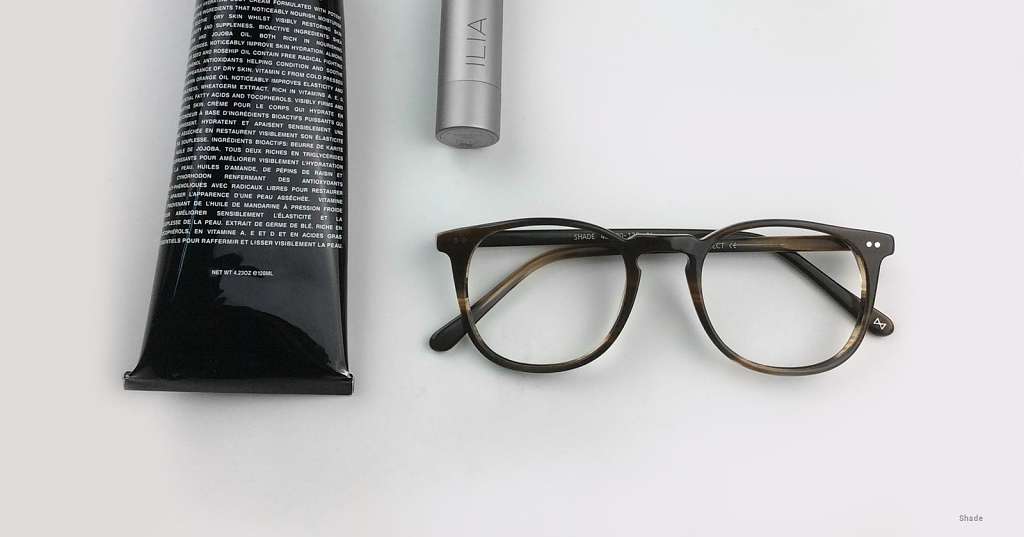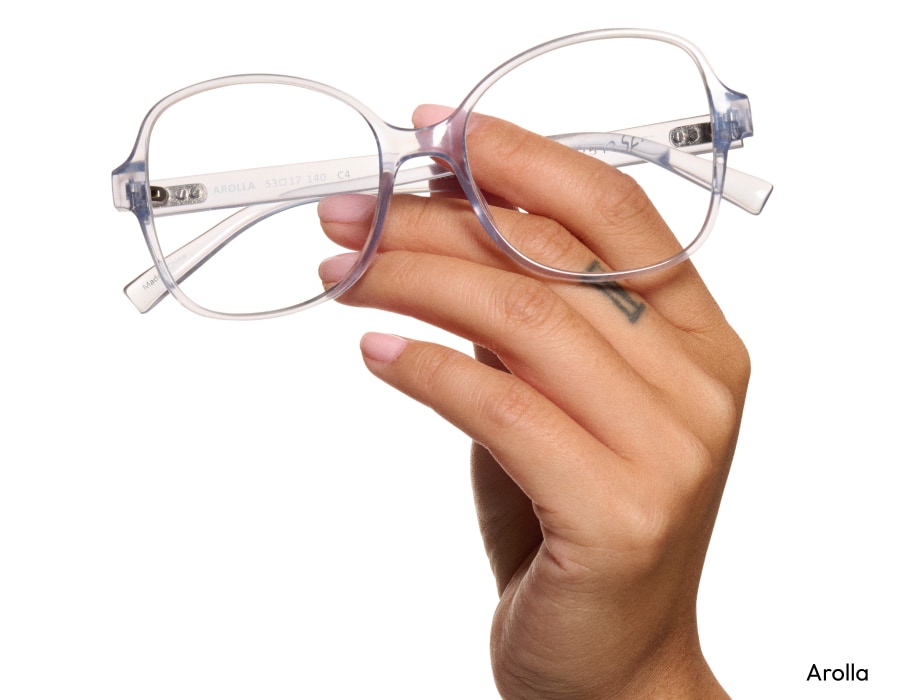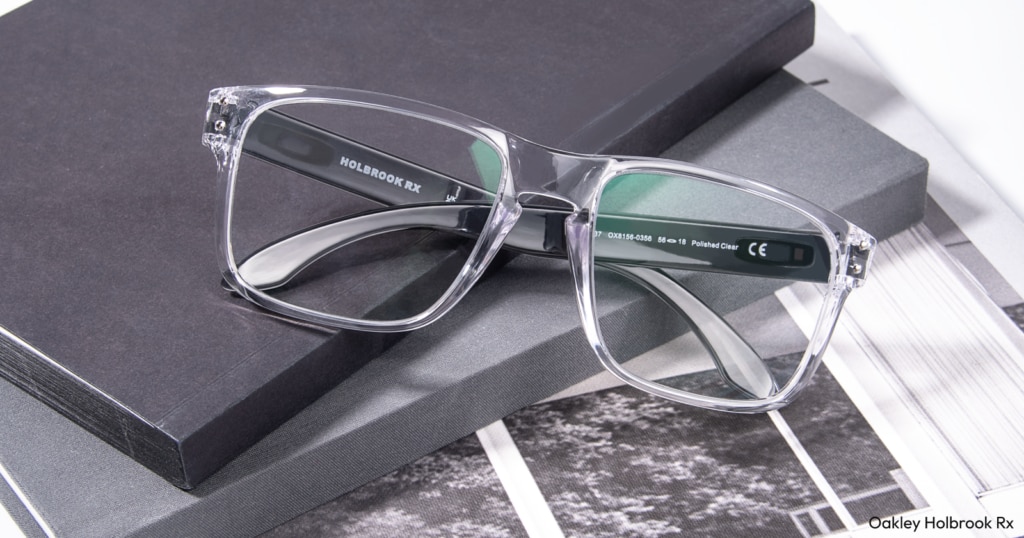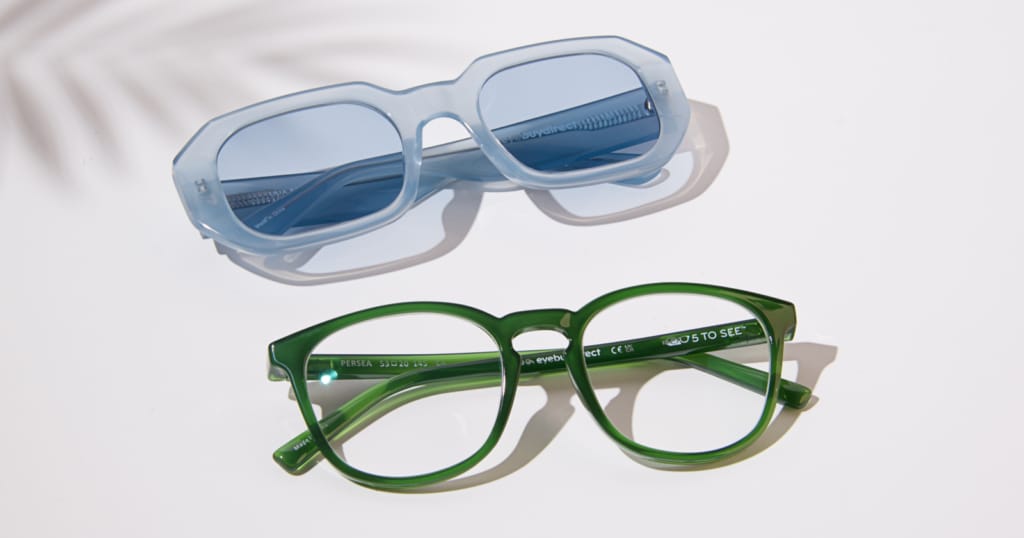Most glasses are made of plastic lenses, or “organic glass,” if you want to get fancy. But why are so many glasses lenses made of plastic?
In most cases, they’re lighter than traditional glass lenses, which means they’re more comfortable to wear. It’s also easier to apply lens coatings, like anti-glare, to a plastic lens. And think about the reason children’s cups are made of plastic: The material is more resistant to impact.
Here’s a look at lens materials and why it matters for your glasses (and your vision).
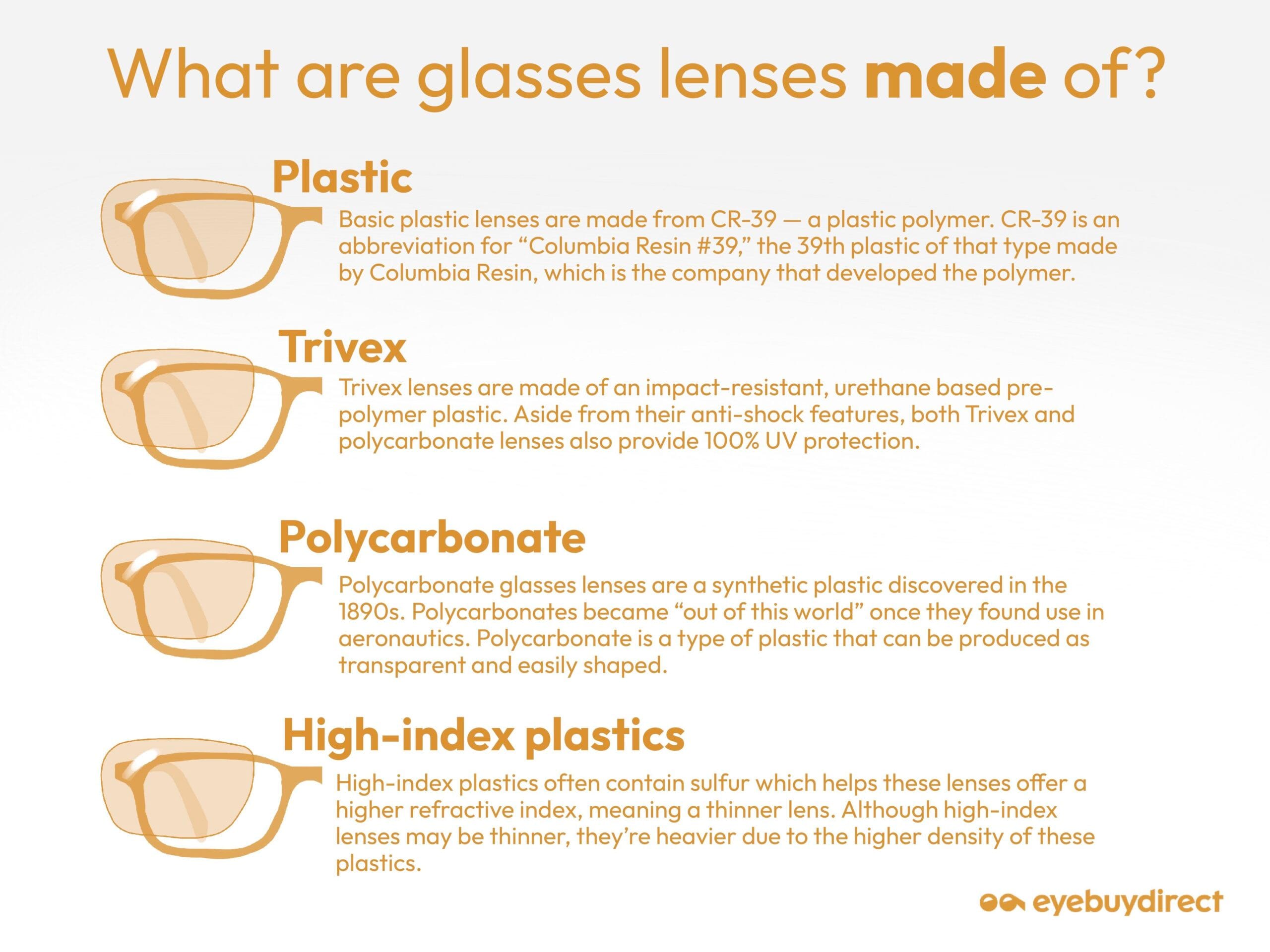
Aren’t Some Glasses Made Out of Glass?
It’s a misconception that ALL glasses lenses are made of glass. Fun fact! Even proto-sunglasses, that predate corrective lenses, weren’t made from glass, but a mineral called quartz instead.
So, yes, originally most glasses lenses were made of glass.
But as lens technology advanced, the lens material for eyewear shifted from glass to plastics. Now, lens makers use different types of high-tech plastics for different lens indexes, hardnesses, and needs. So let’s take a look at the different types of plastics and materials used to make modern glasses lenses.
Plastic Eyeglasses and Sunglasses Lenses
There are four main types of plastics used to make eyeglass and sunglass lenses: plastic, Trivex, polycarbonate, and high-index plastics. Below, we’ll discuss the details of each material and how a plastic lens compares to a glass lens.
Warning: We apologize in advance if things get a little sciencey!
First up, we have basic plastic lenses which are made from CR-39 — a plastic polymer. CR-39 is an abbreviation for “Columbia Resin #39,” the 39th plastic of that type made by Columbia Resin, which is the company that developed the polymer.
After that, we have polycarbonate glasses lenses. A synthetic plastic discovered in the 1890s, polycarbonates became “out of this world” once they found use in aeronautics. Polycarbonate is a type of plastic that can be produced as transparent and easily shaped, making it great for optical (glasses) lenses. It’s also impact resistant, meaning they’re a good lens choice for kids (or adults!) who tend to be accident-prone.
Similar to polycarbonate, Trivex lenses are made of an impact-resistant, urethane based pre-polymer plastic. Aside from their anti-shock features, both Trivex and polycarbonate lenses also provide 100% UV protection.
Finally, there are high-index plastics. The plastics used for this type of lens often contain sulfur. The atoms of this odorous element help these lenses offer a higher refractive index, meaning a thinner lens. Although high-index lenses may be thinner, they’re heavier due to the higher density of these plastics.
How Are Eyeglass Lenses Made?
There is a special process behind each optical lens. These are the main steps that go into producing plastic prescription lenses:
- First, a lab technician reviews your prescription, and takes a lens bank (a curved glass or plastic disc that acts as the basis of the lens) that closely matches your prescription.
- The technician puts the lens bank into a grinding machine and grinds it into a shape that matches your prescription even closer, so you can have the crispest vision possible.
- Then, the lenses are edged and cut into a shape that fits the glasses frame you chose.
- Afterward, the neatly cut lenses are dipped in a solution that protects them from scratches, gives them a tint, or more!
Glass Eyeglasses Lenses
If plastic lenses are the norm for glasses, then why do some people still use glass lenses? For starters, certain lenses are best for certain uses. Even though lens technology has advanced (to the point of even being able to correct certain types of colorblindness), there is no one perfect corrective lens.
One of the main advantages of glass lenses for prescription eyeglasses or sunglasses is that glass has a better index range. This doesn’t matter to most people, especially for those who have little to no prescription. But it does matter to glasses wearers with incredibly strong prescriptions.
Choosing lenses made from mineral glass means you can get thinner lenses with less distortion. Another advantage of glass lenses is that they are physically harder, meaning they’re even more resistant to scratches. (Glass eyeglass lenses are made from different types of glass, like borosilicate, depending on the index and the manufacturer.)
So why aren’t your glasses lenses made of glass? The main reasons are that glass lenses are heavier, more delicate, and more difficult to produce.
What You Need to Know About Glasses Lenses
First of all, getting the right lens coating(s) can make a world of difference in your lenses, no matter what they’re made of. That’s why Eyebuydirect offers a wide selection of coatings to help protect your eyes and your lenses. In fact, your lenses are so important to us that we offer our scratch resistant coating for free!
A quick side note: Eyebuydirect does not carry Trivex or glass lenses, but we do offer up to six different lens indexes you can shop from depending on your prescription. Want to know more about our lenses? Contact us for a chat.

